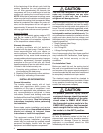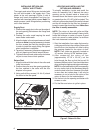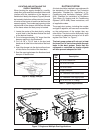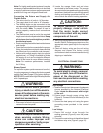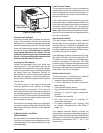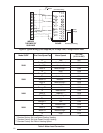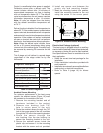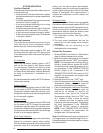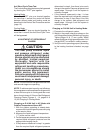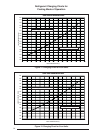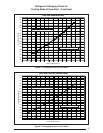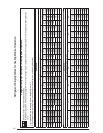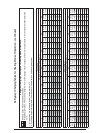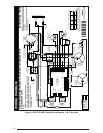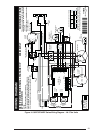
12
SYSTEM OPERATION
Pre-Start Checklist
The following check list should be observed prior
to starting the unit.
Is the unit level? Unit should be level or slightly
slanted toward the drain for proper condensate
drainage.
Is the unit installed with the proper clearances
as listed in Figure 2 (page 5)?
Is the wiring correct according to the wiring
diagram and electrical codes?
Are all the wiring connections tight? Check the
condenser fan to make sure it turns freely.
Is the overcurrent protection properly sized?
Is the thermostat wired correctly? Is it installed
in a proper location?
Start-Up Procedure
The control circuit consists of an anti-short cycle
timer that will not let the compressor re-start
before three (3) minutes have elapsed.
Set the thermostat system mode to OFF, and
the thermostat fan mode to AUTO. Apply power
at the disconnect switch and check the system
operations:
Air Circulation
Leave the thermostat system mode on OFF,
and set the fan mode to ON. Blower should
run continuously. Check the air delivery at the
supply registers and adjust register openings
for balanced air distribution. Examine ductwork
for leaks or obstruction if insuffi cient air is
detected.
Set the thermostat fan mode to AUTO. The blower
should stop running.
System Heating
Set the thermostat system mode to HEAT and
the fan mode to AUTO. Change the thermostat
temperature selector above the existing room
temperature and check for the discharge of warm
air at the supply registers.
System Cooling
Set the thermostat’s system mode to COOL and
the fan mode to AUTO. Change the thermostat
temperature selector below the existing room
temperature. Allow the cooling system to operate
for several minutes and check for the discharge
of cool air at the supply registers.
Short Cycle Protection
The control circuit is equipped with a time-delay
feature for protection against short cycling.
With the system operating in the cooling mode,
gradually raise the thermostat temperature
setting until the whole system de-energizes.
Immediately lower the thermostat temperature
to the original setting and verify that the indoor
blower is energized. After approximately 3
minutes the compressor and the outdoor fan
will energize.
Emergency Heat
(Available only when Electric heat is supplied)
Set the thermostat’s system mode to EM HT and
the fan mode to either AUTO (intermittent air) or
to ON (continuous air). Change the thermostat’s
temperature selector above the existing room
temperature and check the following:
1. The thermostat auxiliary heat light (RED)
should be on.
2. The heat pump compressor and the fan
should not run; low voltage circuit remains
energized.
3. The blower will run according to the
thermostat’s fan mode setting.
Defrost Test Procedure
1. Terminals R & C must have 18 - 30V between
them for defrost sequences to initiate.
2 With thermostat in heat mode (Y connected to
R), short (and hold) the “TEST” pins together.
NOTE: This energizes the reversing valve to
initiate a forced defrost, bypass the ASCD,
and allow the high stage compressor to turn
on immediately (if the “REMOVE FOR NO
DELAY” jumper at P6 is removed). If the
“REMOVE FOR NO DELAY” jumper at P6 is
installed, the compressor will energize after
a 30 second delay.
3. Remove the short on the “TEST” pins.
• If the Coil temperature is above the Terminate
Temperature setting, the defrost cycle will
terminate (reversing valve de-energizes).
• If the coil temperature is below the Terminate
Temperature setting, the defrost cycle will
continue for 14 minutes (or until the coil
temperature rises above the Terminate
Temperature setting). Short the “TEST” pins
for 1 second or more to force the control
out of defrost and back to heating mode
(reversing valve de-energized). Compressor
will start immediately (if the “REMOVE
FOR NO DELAY” jumper is removed).
NOTE: If the “REMOVE FOR NO DELAY”
jumper is installed, the compressor will
energize after a 30 second delay.
Note: If the Y2 thermostat input is energized (on
a 2-stage system), the second stage turns on.
If the above steps will not initiate a defrost, replace
the defrost board.



